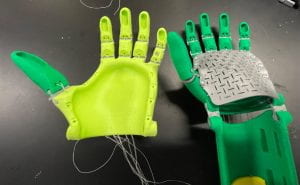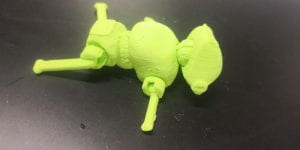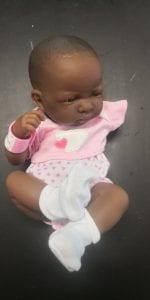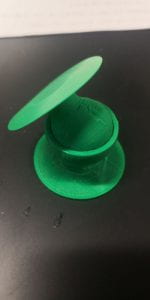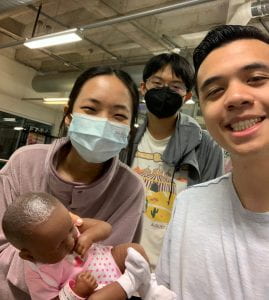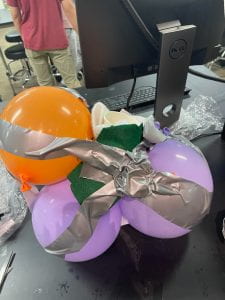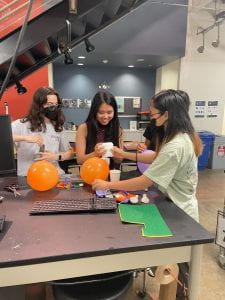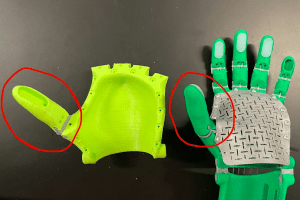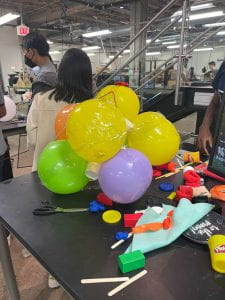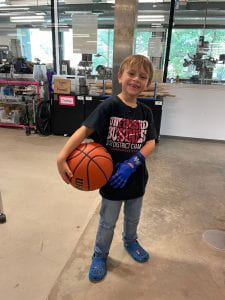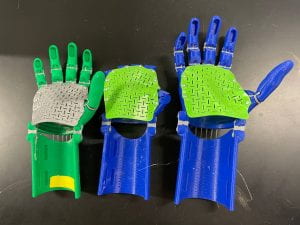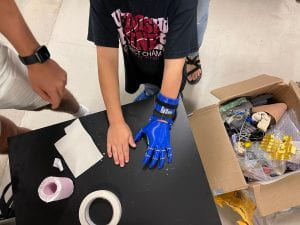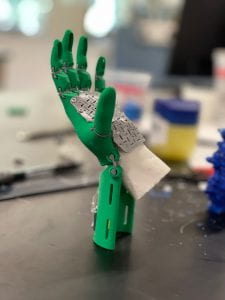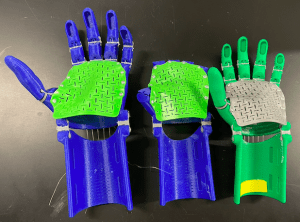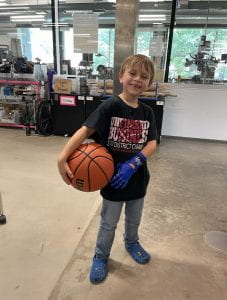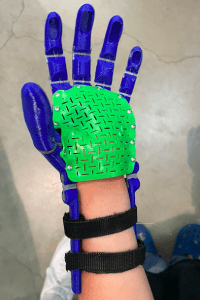Hey everyone!
Last week, our primary objectives were to become familiar with Computer-Aided Design (CAD) software, begin to make modifications to the existing kinetic hand design from e-Nable, and continue researching and testing possible materials. At the beginning of the week, we participated in an introductory CAD workshop and then further familiarized ourselves with Fusion 360 and Blender using online tutorials. Finally, after all of our research and brainstorming, we began the process of making our first modifications to our base design.
The adjustments we’d like to make first are repositioning the thumb better so that there is equal contact between a basketball and each of the fingertips, improving the support provided by the wrist hinges during extension, and relocating the tensioners to maintain tension in the fingers while limiting the movement of the fingers. Since we were all fairly new to CAD, the process was slow at first, but we were able to later get the hang of it and complete the redesign of the thumb joint. (It’s sort of difficult to see in the image, but the thumb has been rotated inwards and further back on the hand.)
Later in the week, we had a very productive impromptu meeting with Dr. Grant Belton, who is one of the mentors for the smart helmet team. We were discussing various material options we were considering using while 3D printing our device, and he informed us that we could fabricate custom printed padded inserts using a lattice pattern infill and a special resin printer. This technology is already used to make helmets for NFL players and could match our intended use case very well.
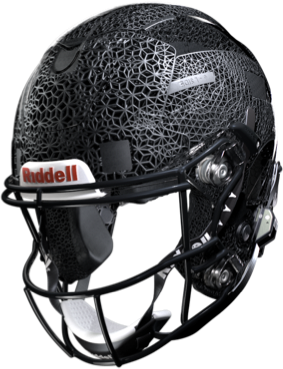
Finally, as part of a low-fidelity prototyping workshop, I participated in an egg-drop contest with another team of interns. Using a design inspired by engineering influencer Mark Rober, we successfully passed the drop and won gift cards to Rice Coffeehouse!
Thanks for reading my post! See y’all next week!
Alex
